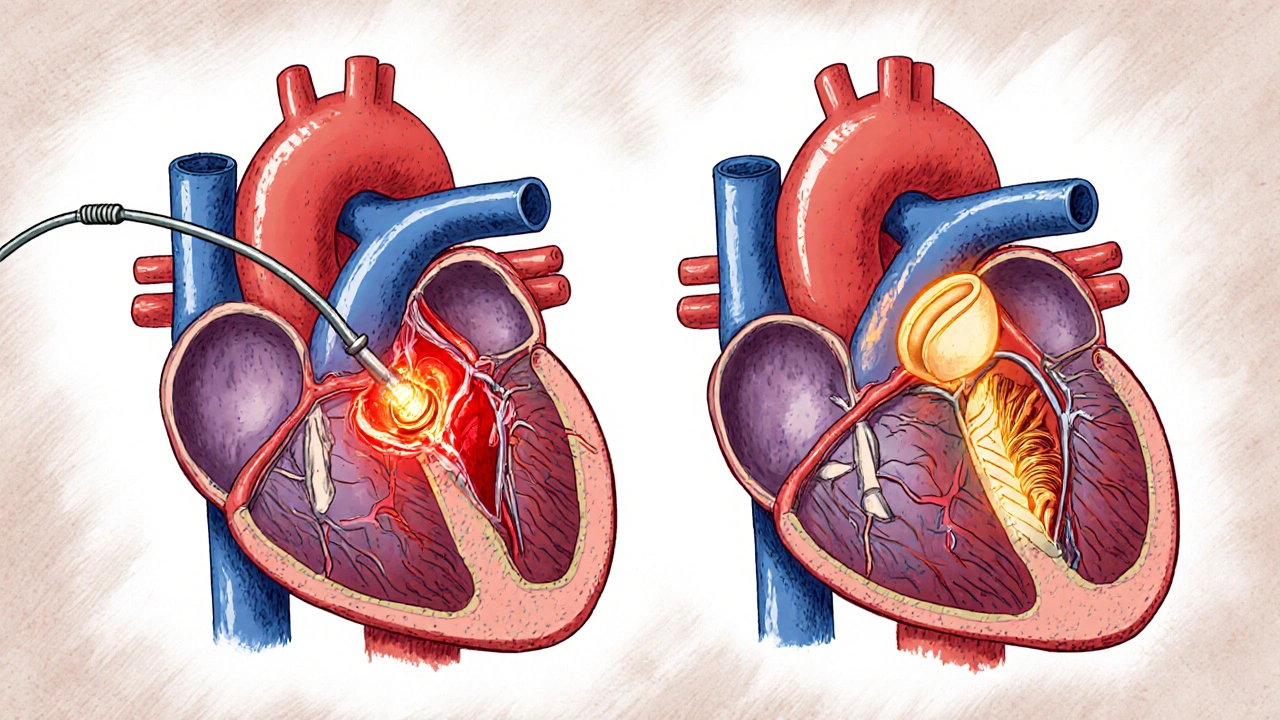Coronary Revascularization: Procedures, Risks, and What You Need to Know
When your heart’s arteries get clogged, coronary revascularization, a set of medical procedures designed to restore blood flow to the heart muscle. Also known as myocardial revascularization, it’s not a cure—but it can mean the difference between living with chest pain and living without it. This isn’t just for older adults. People in their 40s and 50s with diabetes, high cholesterol, or a family history of heart disease are increasingly needing it. The goal is simple: get oxygen-rich blood moving again through blocked or narrowed arteries so your heart doesn’t weaken.
There are two main ways to do this: angioplasty, a minimally invasive procedure where a balloon is inflated inside the artery to open it up. Often, a tiny metal mesh tube called a stent is left behind to keep the artery open. And then there’s CABG, or coronary artery bypass grafting. This is open-heart surgery where a surgeon takes a blood vessel from your leg, arm, or chest and uses it to route blood around the blocked section. Angioplasty is faster, less risky, and usually done as an outpatient procedure. CABG is more intense but lasts longer, especially if multiple arteries are blocked or you have diabetes. Which one you get depends on your age, overall health, how many arteries are affected, and whether you’ve had heart attacks before.
Stents aren’t perfect. Some people develop scar tissue inside them, causing the artery to narrow again. That’s called restenosis. Newer drug-coated stents have cut that risk way down. CABG recovery takes weeks, and you’ll need cardiac rehab. Both procedures carry risks—bleeding, infection, kidney issues from contrast dye, or even stroke. But for many, the risk of not doing anything is worse. If you’ve been told you need revascularization, ask your doctor: Is this about relieving symptoms? Preventing a heart attack? Or both?
What you’ll find below are real, practical guides on how these procedures fit into daily life. You’ll read about how medications like antiplatelets work after a stent, why some people still get chest pain even after surgery, and how lifestyle changes make or break long-term success. We cover what happens if you skip cardiac rehab, how to tell if your stent is failing, and why some patients end up needing a second procedure. These aren’t theory pieces—they’re from people who’ve been through it, and the doctors who help them recover.

- 14 Comments
PCI and CABG are the two main treatments for blocked heart arteries. Learn how they differ, which is better for diabetes or complex disease, and how doctors decide between stents and bypass surgery using real-world data.
